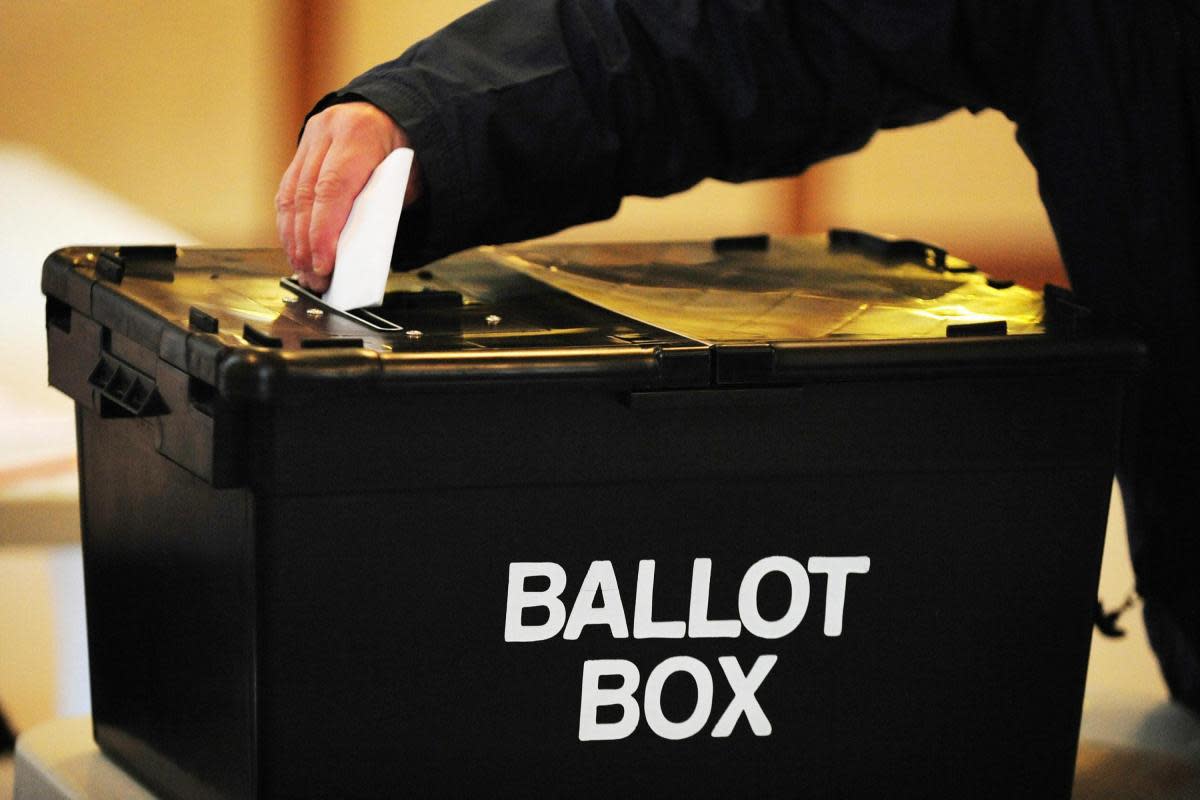How does First Past The Post work?

VOTERS are heading to the polls today to cast their ballot in the General Election and the results will all be decided via a First Past The Post (FPTP) voting system.
On the face of it it’s quite a simple system where the winner takes all.
The UK is divided into 650 constituencies (57 in Scotland). The candidate with the most votes in each constituency will become its MP.
There will be one candidate per political party on your ballot paper, with usually some independent candidates too. Voters only receive one vote and so simply put a cross next to the person they wish to become their MP.
It is a simple majority voting system and so a winning candidate only needs one more vote than any of the others to be elected.
It sounds easy, but the system it marred with controversy and you will probably hear a lot of talk about wasted votes around the election.
What’s the problem with it?
The issue with FPTP is it’s not proportional, so all the votes that were cast for other candidates other than the winner end up meaning nothing.
So you could have a situation where the winning candidate gets 42% of the vote. They got more votes than everyone else, but they also got fewer votes than all the other candidates combined.
Quite often, this means the winning candidate isn’t actually who most of the electorate backed.
READ MORE: Will the SNP’s Pete Wishart win seventh term as MP?
Equally, the party which ends up forming the government may not actually have received the most votes. They have just simply ended up with the most MPs.
This is why you see some people calling for electoral reform and a fairer system, so that the Parliament can be more representative of the nation.
What is a proportional representation (PR)?
Some more proportional systems are already in use in the UK. The Scottish Parliament (below) uses the additional member system where voters get to cast two ballots – one for a constituency MSP and another for what’s known a list or regional MSP.
The constituency vote uses FPTP, where you choose an individual candidate you want to represent you at Holyrood. Meanwhile, for the list vote, voters simply choose a party rather than a specific candidate and regional MSPs are then chosen using a formula, meaning the number of seats a party gets in total across the region is about the same as the percentage of votes it receives.
Council elections in Scotland also use a proportional system known as single transferrable vote, which is designed to reflect diversity of opinions in an area.
In this case, voters rank candidates in order of preference. For someone to be elected, they will need to hit a certain quota or set number of votes.
READ MORE: New General Election poll puts SNP ahead of Labour
Votes are counted in stages, with only first preference votes being counted in the first stage. Anyone who reaches the quota at this stage is elected.
At stage 2, any votes received for a candidate above the quota are transferred to the next choice on each of those ballot papers. If no candidate has enough votes to reach the quota, the one with the lowest number is eliminated. All of their votes are then passed to the next preference on those ballot papers.
This process is simply repeated until all the seats in a council ward have been filled.
So you can see how both of these systems allow people to express their opinions in a more nuanced fashion and receive a parliament that ends up representing the breadth of feeling across a community.

 Yahoo News
Yahoo News 
